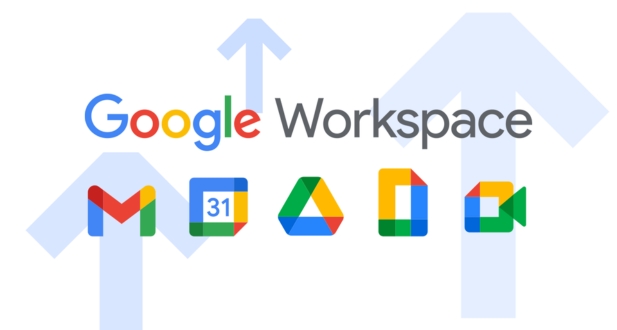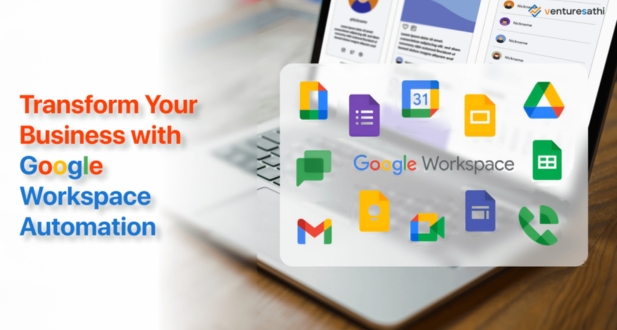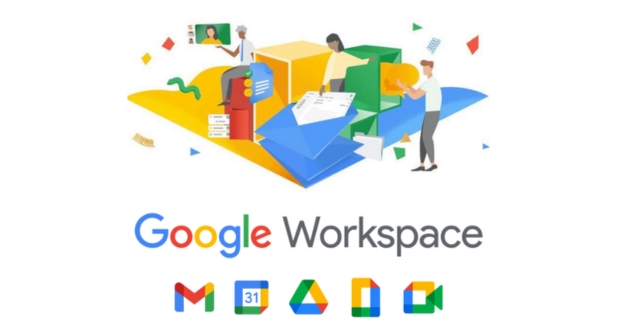Introduction
In today’s fast-paced digital landscape, businesses are continually seeking innovative ways to enhance collaboration, communication, and productivity. Google Workspace has emerged as a game-changer, offering a suite of cloud-based tools that streamline workflows and facilitate seamless teamwork. While the standard Google Workspace suite is powerful on its own, businesses can take their productivity to the next level by embracing customized solutions tailored to their unique needs.
Understanding Google Workspace

Google Workspace, previously known as G Suite, is a comprehensive set of cloud-based productivity tools developed by Google. It aims to enhance collaboration, communication, and efficiency within organizations by providing a seamless and integrated suite of applications. The key components of Google Workspace include:
Gmail: Google’s email service, offering a powerful and intuitive platform for communication. Gmail includes features such as threaded conversations, powerful search capabilities, and robust spam filtering.
- Google Drive: A cloud storage solution that allows users to store, access, and share files securely. Google Drive integrates with other Google Workspace applications, making it easy to collaborate on documents, spreadsheets, and presentations in real-time.
- Google Calendar: A versatile calendar tool that facilitates scheduling and time management. Users can create and share calendars, schedule events, set reminders, and integrate with other Google Workspace applications.
- Google Docs: A collaborative word processing tool that enables multiple users to work on a document simultaneously. Changes are saved in real-time, fostering seamless teamwork and eliminating version control issues.
- Google Sheets: A collaborative spreadsheet application that allows multiple users to work on the same spreadsheet simultaneously. It supports powerful data analysis and visualization tools.
- Google Slides: A presentation tool for creating and collaborating on slideshows. Like other Google Workspace applications, it supports real-time collaboration, making it easy for teams to work together on presentations.
- Google Meet: A video conferencing tool that facilitates virtual meetings and collaboration. It supports features such as screen sharing, chat, and integration with other Google Workspace applications.
The Power of Customization

-
Customized Email Solutions:
Branded Email Addresses: Establishing a professional image is crucial. With Google Workspace customization, businesses can create branded email addresses using their own domain. This not only enhances brand identity but also builds trust among clients and partners.Advanced Email Filtering: Tailoring email filters allows organizations to prioritize important messages, reduce clutter, and enhance email organization. Customized filters ensure that the right emails reach the right people at the right time, improving overall communication efficiency.
-
Tailored Document Management:
- Folder Structure and Permissions: Google Drive customization allows businesses to create folder structures that align with their organizational hierarchy. Fine-grained permissions can be implemented to control access to sensitive documents, ensuring data security and compliance.
- Document Templates: Customizing document templates for reports, proposals, and other frequently used files saves time and maintains consistency in document formatting across the organization. This is especially valuable for creating a standardized and professional look for documents.
-
Personalized Collaboration Spaces:
- Custom Team Drives: Efficiently organize team projects with custom Team Drives. This allows businesses to structure their collaborative spaces in a way that is most relevant to their workflow, ensuring that relevant files are easily accessible to team members and simplifying project management.
- Integrated Communication Channels: Customize Google Chat spaces to facilitate instant communication within teams. Integration of relevant channels for specific projects, departments, or cross-functional teams ensures that communication is streamlined and organized, contributing to improved collaboration.
- Customization in Google Workspace empowers organizations to mold the platform according to their unique requirements, fostering a more seamless integration of these tools into existing workflows and ultimately enhancing overall productivity and user satisfaction.
Integration with Third-Party Tools
Google Workspace’s open architecture allows seamless integration with a myriad of third-party applications. Businesses can leverage these integrations to create a unified and efficient digital workspace.
A, CRM Integration:
Integrating Google Workspace with Customer Relationship Management (CRM) tools is a strategic move to centralize customer data and enhance collaboration across teams. By seamlessly connecting Google Workspace with CRM systems like Salesforce or HubSpot, organizations can achieve a holistic view of customer interactions. This integration enables sales and marketing teams to work more cohesively, as they can easily access and update customer information within the familiar Google Workspace environment. Having a consolidated platform for customer data fosters better communication, improves customer relationship management, and supports more informed decision-making.
B. Project Management Tools:
Linking Google Workspace with popular project management tools such as Asana, Trello, or Jira streamlines task management, project coordination, and overall collaboration. This integration allows teams to seamlessly transition between communication and task execution within a unified environment. For instance, users can attach Google Docs or Sheets directly to project tasks, facilitating easy access to relevant documents. Real-time updates and notifications between Google Workspace and project management tools enhance efficiency, reduce communication gaps, and contribute to more effective project timelines and completion.
C. Analytics Integration:
Integrating Google Workspace with analytics tools provides organizations with valuable insights into user behavior, collaboration patterns, and overall productivity. By connecting tools like Google Analytics or other business intelligence solutions, businesses can analyze how employees are utilizing Google Workspace applications and identify areas for improvement. This data-driven approach enables organizations to make informed decisions, optimize workflows, and enhance overall productivity. Understanding user engagement and collaboration metrics can also be instrumental in tailoring training programs to address specific needs within the organization, ultimately fostering a more efficient and effective work environment.
Automation for Efficiency

Workflow Automation:
- Google Apps Script: Google Apps Script is a JavaScript-based scripting language that allows you to create custom automation solutions for various Google Workspace applications. With Apps Script, you can automate repetitive tasks and processes across multiple Google services.Automated Email Responses: For instance, you can set up scripts to automatically respond to emails based on certain criteria, such as filtering and categorizing messages or sending acknowledgment emails for form submissions. Spreadsheet Updates: Google Apps Script can be used to automate updates to Google Sheets. For example, you can create a script to import data from external sources, perform calculations, and update your spreadsheet at scheduled intervals.
- Report Generation: Generate automated reports by pulling data from different Google Workspace tools and compiling it into a single document or presentation. This can be particularly useful for tracking key performance indicators or summarizing project progress.
Event Scheduling Automation:
- Google Calendar Appointment Slots: This feature in Google Calendar allows you to set specific blocks of time during which others can schedule appointments with you. This is particularly useful for scenarios like client meetings, interviews, or office hours.
- Efficient Time Management: By automating the scheduling of appointments, you reduce the back-and-forth communication typically associated with finding suitable time slots. Users can simply book an available slot, and the calendar is automatically updated.
- Avoiding Scheduling Conflicts: Google Calendar Appointment Slots help prevent scheduling conflicts by ensuring that only available time slots are presented to those looking to schedule appointments. This can be crucial for maintaining an organized and conflict-free schedule.
The combination of workflow automation and event scheduling automation in Google Workspace contributes to enhanced efficiency, time savings, and a more streamlined work process. These automated solutions enable users to focus on more complex and creative aspects of their work, leaving repetitive and time-consuming tasks to be handled automatically.
Data Security and Compliance
Data Loss Prevention (DLP):
- Customization: Google Workspace allows businesses to customize Data Loss Prevention (DLP) policies to align with their specific needs. This involves setting up rules and conditions to prevent the unauthorized sharing or transmission of sensitive information.
- Preventing Data Leakage: DLP customization is particularly crucial for industries that handle sensitive data, such as healthcare, finance, or legal sectors. By tailoring DLP policies, organizations can mitigate the risk of data leakage and ensure compliance with industry regulations.
Two-Factor Authentication (2FA):
- Customized Policies: Google Workspace enables the implementation of customized Two-Factor Authentication (2FA) policies. This involves setting rules for when and how 2FA is required, adding an additional layer of security beyond just a password.
- Enhanced Security: Customizing 2FA helps organizations enhance the security of user accounts, protecting against unauthorized access even if login credentials are compromised. This is crucial for safeguarding sensitive data and maintaining the integrity of the organization’s digital assets.
- Compliance Requirements: In many industries, implementing 2FA is not only a best practice for security but also a requirement to comply with data protection regulations. Customizing 2FA policies allows businesses to meet these compliance standards efficiently.
Access Controls and Permissions:
- Granular Customization: Google Workspace provides options for granular customization of access controls and permissions. This allows organizations to define who can access specific files, folders, or applications, ensuring that only authorized individuals have the necessary permissions.
- Compliance Alignment: Customizing access controls is essential for aligning with industry-specific compliance standards. It helps organizations maintain a secure environment, control data access, and demonstrate compliance during audits.
Audit Logs:
- Detailed Tracking: Google Workspace offers detailed audit logs that track user activities, changes to settings, and data access. These logs can be customized to focus on specific events or users, providing organizations with a comprehensive view of system activities.
- Compliance Reporting: Customizing audit logs is valuable for compliance reporting. Organizations can tailor these logs to capture the information required to demonstrate adherence to regulatory requirements and internal policies.
Encryption:
- Custom Encryption Policies: Google Workspace allows businesses to customize encryption policies for data at rest and in transit. This customization ensures that sensitive information is protected, meeting encryption standards relevant to the organization’s industry.
- End-to-End Encryption: By customizing encryption policies, organizations can achieve end-to-end encryption, enhancing data security and meeting stringent compliance mandates related to data protection.
Customization in data security and compliance within Google Workspace empowers organizations to tailor their security measures to specific needs, ensuring a robust and flexible approach to safeguarding sensitive information and meeting regulatory requirements.
Training and Support
Customized Training Modules:
- Tailored Content: Develop training modules that are specifically tailored to the customization implemented in the organization. This ensures that employees receive relevant and targeted training, focusing on the features and functionalities that are most important for their daily tasks.
- Interactive Learning: Utilize interactive learning methods such as hands-on workshops, webinars, or e-learning platforms to engage employees actively. Practical examples and real-world scenarios can help users understand how to apply the customized tools in their work.
- Role-Based Training: Recognize that different roles within the organization may have varying requirements. Design training modules based on user roles, addressing the specific needs and functionalities relevant to each group.
Dedicated Support Channels:
- Helpdesk Support: Establish a dedicated helpdesk or support team equipped to handle queries related to the customized Google Workspace solutions. Ensure that support staff are well-versed in the specific customizations and can provide timely assistance.
- Video Tutorials: Create a library of video tutorials that cover common tasks and troubleshooting procedures related to the customized tools. These tutorials can serve as on-demand resources for employees seeking quick solutions to common issues.
- Knowledge Base: Develop a comprehensive knowledge base that houses documentation, FAQs, and best practices for the customized Google Workspace. This can be a self-service resource for employees to find answers to common questions and learn more about the implemented customizations.
- User Communities: Foster user communities where employees can share insights, tips, and challenges related to the customized solutions. This collaborative approach can help create a support network among users, reducing the reliance on formal support channels.
Continuous Learning:
- Regular Updates: As Google Workspace evolves and updates are made to the customized solutions, provide regular training updates to keep employees informed about new features and improvements.
- Feedback Mechanism: Establish a feedback mechanism for users to share their experiences and suggest improvements. This feedback loop can inform future training sessions and help refine the customization based on user needs.
- Refresher Courses: Offer refresher courses periodically to reinforce knowledge and ensure that employees stay proficient in using the customized tools. This is particularly important for organizations that undergo frequent updates or changes in their workflows.
Realizing the Benefits
Highlighting real-world examples of businesses that have successfully implemented customized Google Workspace solutions can provide valuable insights into the tangible benefits of customization.
- Increased Collaboration:
- Provide specific examples of businesses that have customized Google Workspace to enhance collaboration. For instance, discuss how customized collaboration spaces, shared documents, and integrations with other tools have facilitated seamless communication and project collaboration.
- Showcase improvements in team productivity and project outcomes by highlighting before-and-after scenarios. Emphasize features like real-time editing, commenting, and version control that contribute to more efficient teamwork.
- Time and Cost Savings:
- Offer concrete examples of businesses that have leveraged customization in Google Workspace to automate routine tasks and optimize workflows.
- Detail how customized templates, automated approval processes, and integrated third-party apps have streamlined operations, reducing manual efforts and saving time.
- Provide quantifiable metrics, such as the percentage reduction in task completion time or the cost savings achieved through automation.
- Enhanced Security Measures:
- Share success stories of organizations that have customized Google Workspace to enhance security measures, emphasizing compliance with industry regulations.
- Highlight specific security customizations, such as restricted access controls, encryption protocols, or data loss prevention policies, and explain how they have effectively protected sensitive information.
- Include any relevant statistics or outcomes that showcase the success of the customized security measures in preventing data breaches or ensuring compliance with data protection standards.
Future Trends in Google Workspace Customization
-
AI-driven Customization:
- Personalized User Experiences: AI can analyze user behavior and preferences within Google Workspace to customize the interface for individual users. This could involve optimizing the arrangement of apps, suggesting relevant documents, or even adapting the user interface based on the user’s work patterns.
- Predictive Analytics: By leveraging AI algorithms, Google Workspace can predict user needs and preferences. For instance, the system could suggest commonly used templates, offer intelligent spelling and grammar suggestions, or recommend relevant collaborators based on past interactions.
- Automated Decision-Making: AI can assist in decision-making processes within Google Workspace. For example, it could automate routine approvals, suggest optimal meeting times based on participants’ calendars, or even recommend the most suitable collaboration tools for specific tasks.
- Smart Notifications: AI-driven customization can enhance notification systems by prioritizing and contextualizing alerts. Users might receive notifications about important emails, upcoming deadlines, or relevant document changes, all tailored to their individual priorities.
-
Enhanced Collaboration Features:
- Virtual Reality Meeting Spaces: Future iterations of Google Workspace may incorporate virtual reality (VR) meeting spaces, enabling users to have more immersive and interactive virtual meetings. Participants could engage in a shared virtual environment, enhancing the sense of presence and collaboration.
- Advanced Project Management Integrations: Google Workspace may integrate more seamlessly with advanced project management tools. This could include enhanced integration with platforms like Asana, Trello, or Monday.com, allowing for real-time updates, task tracking, and collaborative project planning directly within the Google Workspace environment.
- Integrated Communication Channels: Future enhancements might bring more integration between communication channels. For instance, tighter integration between Google Meet, Chat, and Gmail could provide a unified communication experience, making it easier for teams to collaborate seamlessly across different modes of communication.
- AI-driven Collaboration Insights: AI could play a role in analyzing collaboration patterns and providing insights to optimize teamwork. This might involve identifying bottlenecks, suggesting improvements in communication strategies, or even predicting potential issues in project timelines based on historical data.
Conclusion
In conclusion, customized Google Workspace solutions offer businesses a unique opportunity to tailor their digital workspace to meet specific needs and enhance overall productivity. By leveraging customization, integrating third-party tools, implementing automation, prioritizing data security, and providing comprehensive training and support, organizations can unlock the full potential of Google Workspace. As technology evolves, staying informed about emerging trends will ensure that businesses continue to thrive in the dynamic landscape of digital collaboration. Embrace the power of customization and revolutionize your organization’s approach to productivity with Google Workspace.








